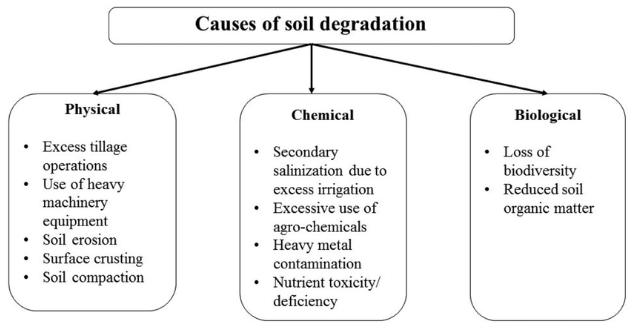7667766266
enquiry@shankarias.in
In a recent conference, UNESCO warns 90% of Earth’s land could be degraded by 2050.
|
Importance of Soil |
|
A third of the world’s soils are degraded and in India, around 29.7% land is degraded.

|
Measures by UNESCO for Conserving Soil |
|